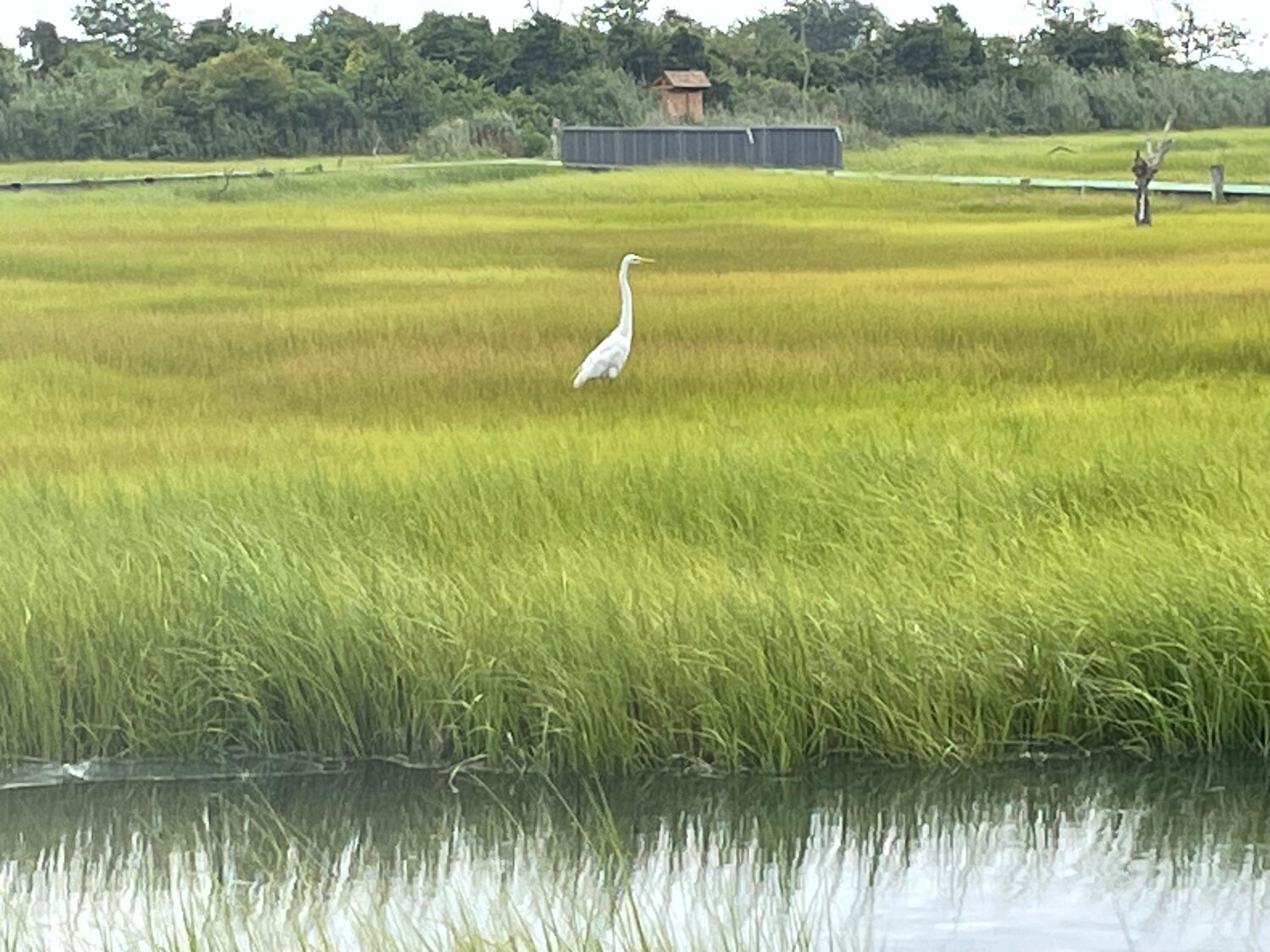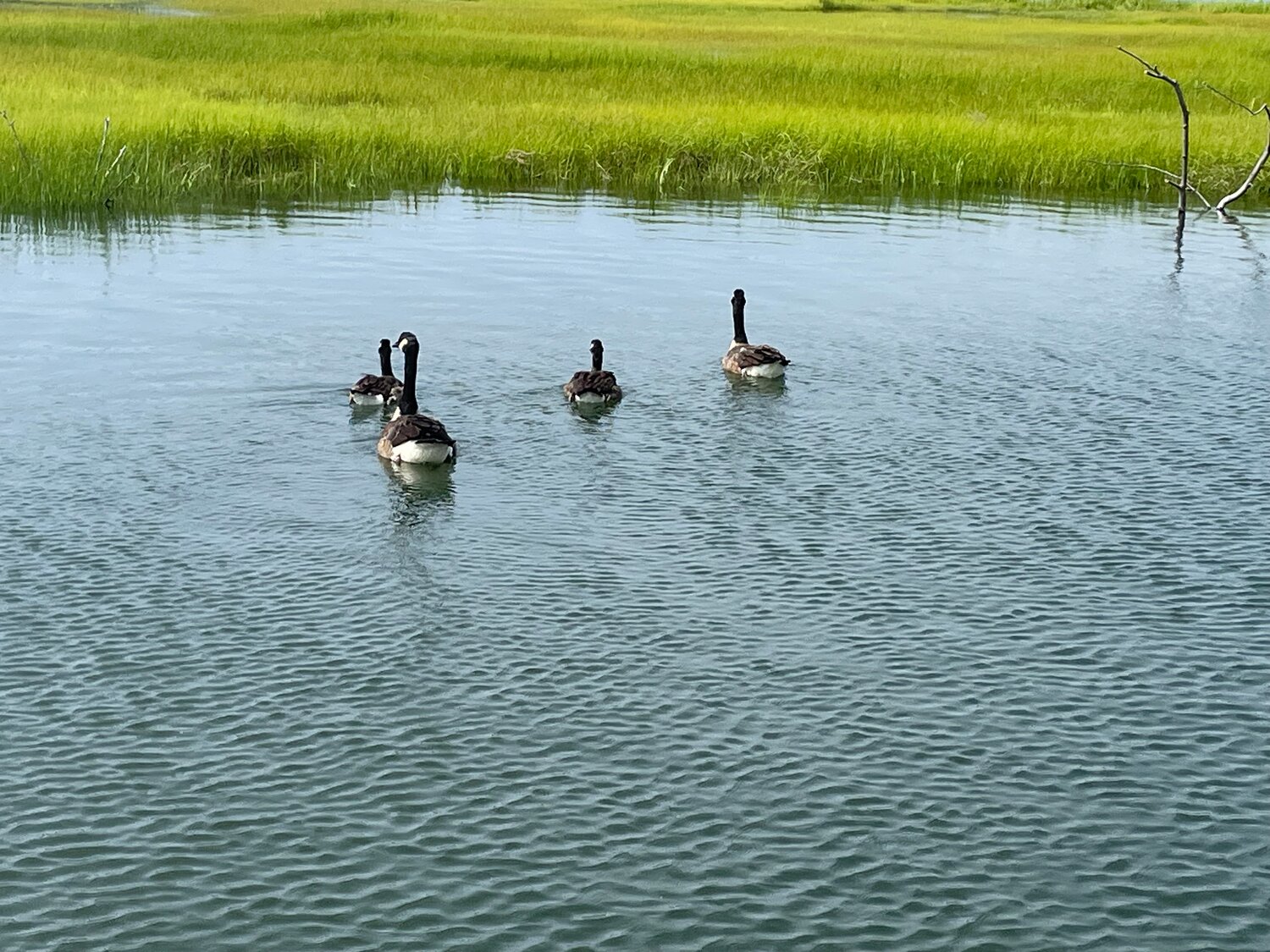Oceanside's Marine Study Area is a nature haven
Just beyond the gravel parking lot of the Marine Nature Study Area in Oceanside is the unexpected beauty of the pristine salt marsh. The marsh is a favorite stop for photographers and casual walkers alike and serves as an outdoor classroom for school children and graduate students. The study area is home to a wide variety of birds and fish, including great egrets, green egrets, yellow-crowned night herons, ospreys, owls, turtles, and Canada geese. Debbie and Dennis Baer come often from Old Bethpage.
“I think it’s beautiful,” Debbie said. “Every time you come here you see something different.”
During Covid, visitation to the area went up. Those looking for a safe outdoor space discovered a new hobby, and there are now more visitations on a regular basis than there was prior to Covid.
The staff, responsible for surveying the fish and birds in the marsh daily, are also patient in explaining the ecology of the marsh. Conservation and Wildlife Biologist Michael Farina surveys fish twice a day by counting what comes into a net he drops over a footbridge. The most common fish in the study area is Atlantic Menhaden, which are plant eaters. Menhaden is the primary food source for everything that is out in the bay, from birds to bigger fish to whales and sharks. The bays are the nursery for the fish before they move into the ocean.
The Long Island salt marsh is the generator for food along the Atlantic shore. The salt marsh is one of the most productive environments on the planet because of its diversity of plants. The more types of plants there are, the higher the productivity of the ecosystem. Farina draws a comparison to a cornfield, known as a monoculture because it only contains one kind of plant.
“If a disease attacks the field, the entire ecosystem is destroyed,” said Farina. “In the salt marsh, if a disease attacks one of the plants, there are hundreds more that are producing energy for the rest of the organisms.”
There are plants on the surface, but there is also phytoplankton in the water. The salt marsh ecosystem is not dependent on weather; it’s dependent on the ocean. The salt marsh continued to be bright emerald green all of last year because it got constant nutrients from the ocean.
Farina, who has been working at the study area since the late 1990s, said he has seen some changes attributable to climate change. When he first started, 70 percent of the marsh would go underwater daily with high tides. Now, he said, it is closer to 80 percent of the 52-acre preserve. The marsh grasses that are straight and upright have adapted to going underwater twice a day with high tide. The grasses that have flattened down are in the supratidal zone, and they only go underwater when there is a full moon and a new moon, every two to two and a half weeks. Over the last 20 years, the supratidal zone has been taken over by the zone that goes underwater every day, twice a day. The salt marsh adapts to these changes, but on Long Island, the construction of houses limits the horizon into which the salt marsh can spread. This causes more and more of the marsh to remain underwater all the time, and become unproductive.
Farina said, climate change can also be seen in the changes in biological organisms. Farina explained how salt marsh sparrows nest in the saltwater grass and if the water gets too high on a regular basis, they die, and the population drops. Sparrows are an indicator species in which we can see the effects of rising oceans due to climate change. Brian Doherty, who often visits the area for photography, appreciates the beauty and the fragility of the marsh.
“This place is an amazing place,” said Doherty. “There’s very few places like this because it’s a natural marsh. There’s very little of this left.”

 50.0°,
Partly Cloudy
50.0°,
Partly Cloudy 









